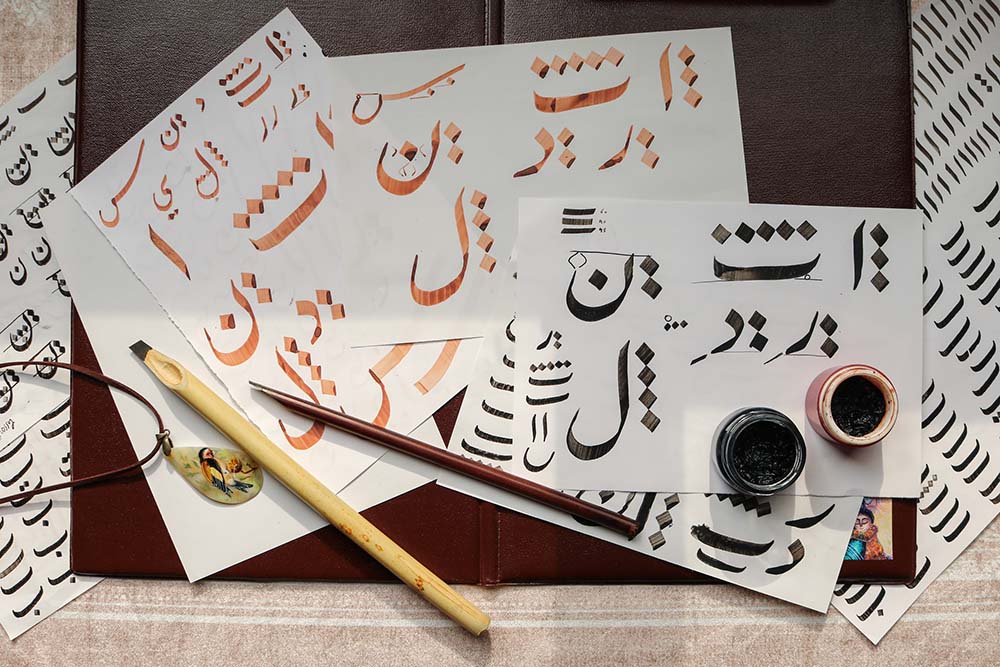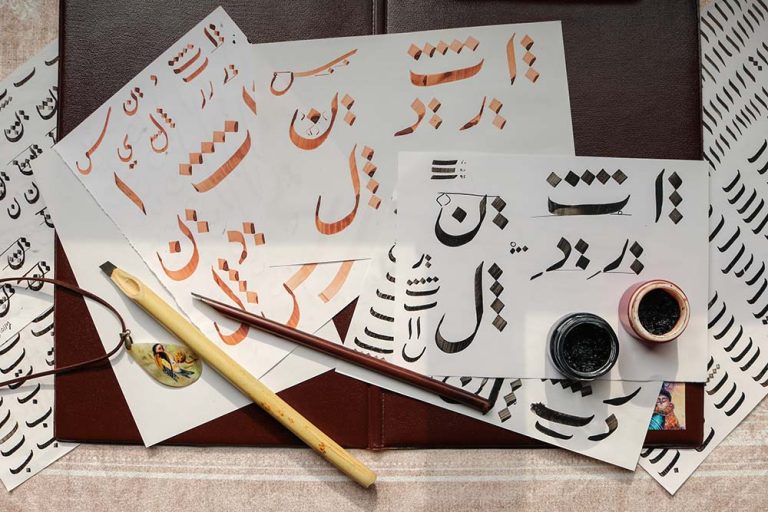Introduction:
Arabic calligraphy is an art form that transcends time, weaving together a rich tapestry of culture, history, and spirituality. With its roots deeply embedded in the Islamic tradition, Arabic calligraphy is not merely a form of decorative writing; it is a powerful expression of cultural identity and a vehicle for preserving the heritage of a vast and diverse civilization.
Historical Roots:
Arabic calligraphy dates back to the 7th century when Islam emerged, and the Quran, the holy book of Islam, was revealed. The early Muslims recognized the importance of preserving and transmitting the divine message, and thus, the art of Arabic calligraphy was born. The intricate and flowing script became a way to elevate the written word to a form of visual art that reflected the divine beauty of the Quranic verses.
Cultural Identity:
Arabic calligraphy holds a special place in the hearts of Arab communities around the world. It serves as a powerful symbol of cultural identity, connecting individuals with their roots and heritage. The diverse styles of Arabic calligraphy, from the classic Kufic to the more elaborate Naskh and Diwani scripts, showcase the breadth and depth of artistic expression within the Arab world.
Spirituality and Devotion:
Beyond its aesthetic appeal, Arabic calligraphy carries a profound spiritual significance. The use of calligraphy in Islamic art is not just about creating beautiful visuals but also about conveying the spiritual essence of the written word. The act of meticulously crafting each stroke reflects the devotion and reverence towards the sacred texts, fostering a deep connection between the artist, the written word, and the divine.
Preservation of Language:
Arabic calligraphy plays a crucial role in preserving the Arabic language. As a written art form, it promotes a sense of linguistic pride and encourages the study and appreciation of the Arabic script. In a world where languages are constantly evolving, Arabic calligraphy serves as a timeless link to the linguistic and cultural roots of the Arab world.
Promotion of Tolerance and Understanding:
The universal appeal of Arabic calligraphy extends beyond the borders of the Arab world. As an art form that celebrates the beauty of language, it serves as a bridge between cultures, fostering tolerance and understanding. Arabic calligraphy invites people from diverse backgrounds to appreciate the aesthetics of a script that transcends linguistic and cultural barriers.
Conclusion:
Arabic calligraphy is more than just an ornamental art form; it is a testament to the rich history, cultural diversity, and spiritual depth of the Arab world. Through its intricate designs and carefully crafted strokes, Arabic calligraphy continues to be a source of inspiration, connecting people across time and space. As we appreciate the beauty of this timeless art, we also celebrate the enduring legacy of a civilization that values the written word as a form of artistic expression and cultural preservation.



